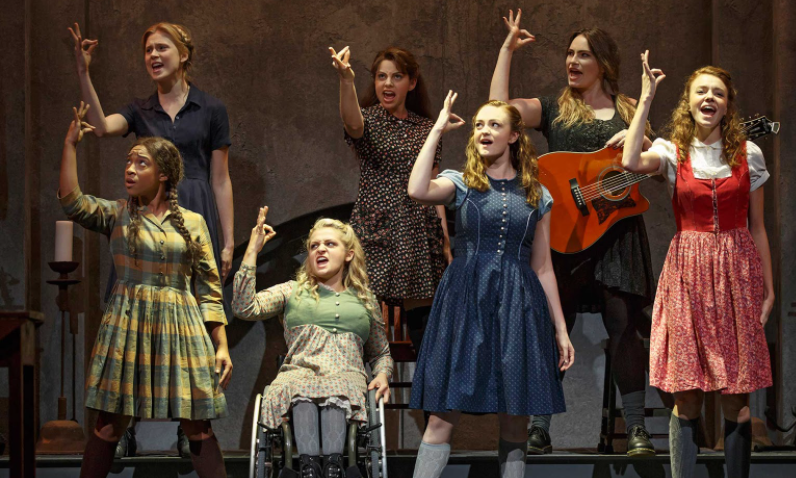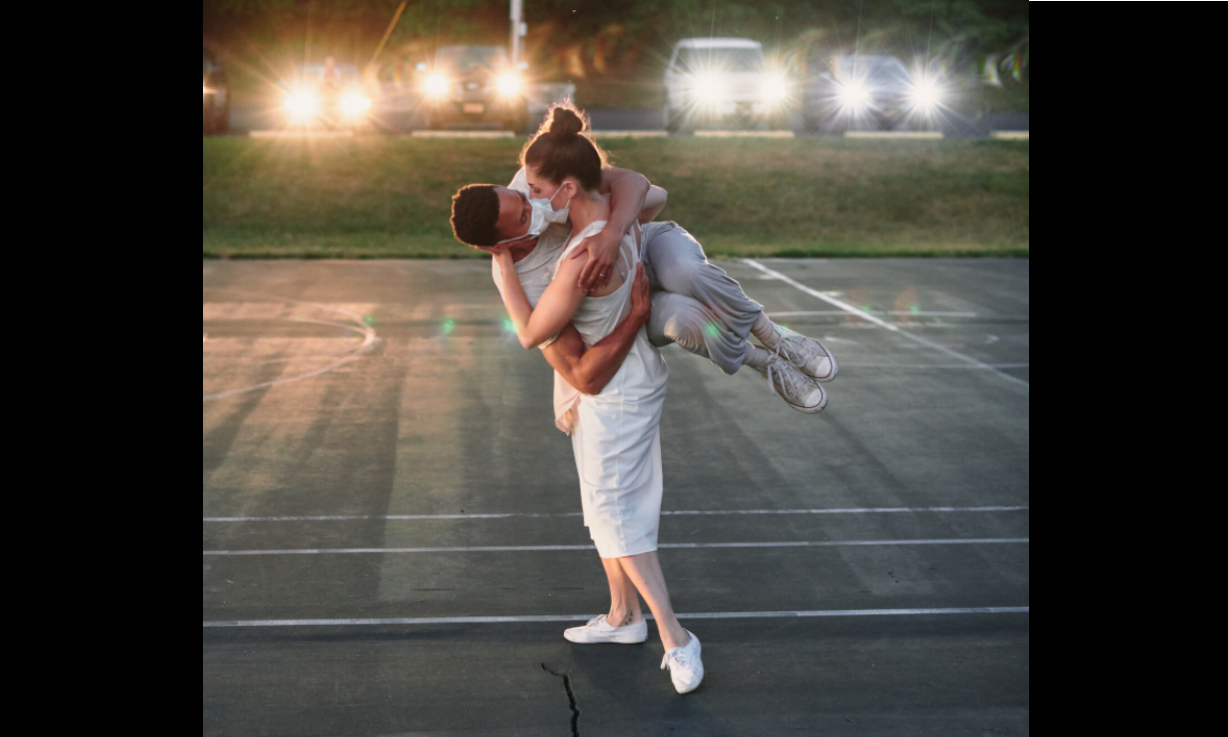Accessibility to Theatre
Ableism in theatre isn’t new. From the simple phrasing of “on your feet” to the lengthy history of accessibility issues with venues, ableism is ingrained in the industry. I suppose it can be argued to a limited extent that some of this comes with the territory—you have to be able to see and hear in order to witness a live performance that predominantly uses visual and auditory storytelling—but that doesn’t excuse egregious accessibility violations across the board. Plus, as technology continues to advance and entertainers put a spotlight on diversity and inclusion, the industry has seen more and more of what radical inclusion looks like, like the wild success of Deaf West Theatre’s integrated ASL performances, which continue to slowly shape the industry for the better.
When the pandemic mandated everyone remain indoors, a new realm of accessibility cracked open. No one could get to the theatre, so the only option was to bring the theatre to the audience, instantaneously solving a problem disabled communities have been asking to be addressed for decades. With a particular sensitivity to accessibility within technology, many creatives took action to make their performances even more inclusive by including captions, image descriptions, and other accommodations. Combined with the new (albeit forced) opportunity to engage in theatre from one’s own home, remote performance opened the door for many, allowing some people with different disabilities and conditions to be included in the audience for the first time. But not for long.
As infection rates declined and the curve flattened, the first pitches for physically distanced and “COVID-safe” performances trickled in. With adamant declarations of proper safety precautions in place and strict adherence to CDC guidelines, some producers and creatives seemed to feel that live, in-person events were safe once again. According to the CDC, in-person gatherings of any kind are still a risk, however state guidelines in New York allow gatherings of up to fifty people in areas that have reached stage four of reopening, so long as everyone is either masked or six feet apart. This presents a massive problem for members of both the disabled and immunocompromised communities. (While disabled and high-risk populations are not synonymous, many high-risk candidates identify as disabled. There is an incredible amount of nuance to be considered with this, but for the sake of brevity, I am grouping high-risk and disabled populations together in terms of widespread accessibility.)
When the pandemic mandated everyone remain indoors, a new realm of accessibility cracked open.
The Pandemic’s Effect
As an immunocompromised person who is significantly high risk for COVID-19, the rush to return to in-person events scares me. As a creator and theatre critic, staying in tune with the industry is key, but I can’t do that if it’s happening in person, even if proper precautions are being taken. Although masks have significantly decreased the rate of transmission, and everyone should be wearing them in any public situation, they don’t mitigate 100 percent of the risk of aerosolized particle spread. There are also considerations to be taken for the many types of masks that exist and their individual percentage of effectiveness, as well as human error and rate of misuse (i.e. wearing the mask below the nose or taking the mask off quickly to sip a drink). Events in indoor spaces are the most dangerous, even when masked and six feet apart, as the virus is still able to spread, which has been particularly exemplified within school environments.
Outside events are a good pivot, as COVID-19 droplets spread less quickly in open-air spaces, but it’s still not a zero-risk environment as this advisement is dependent upon the assumption that fresh air is constantly circulating and dispersing any potential droplets, which dwindles with the erection of outdoor enclosures like tents and plastic sheeting, something many restaurants and performances have created for weatherproofing. Whereas the risk for exposure while outdoors is around twenty times less than indoors, there have been multiple reports of outbreak clusters stemming from outdoor gatherings, such as a backyard fundraising event in Washington, D.C. and an outdoor concert in Minnesota. Same goes for the six-feet rule: remaining further apart and limiting contact certainly reduces the risk of spread, but it doesn’t eliminate it entirely—a March study found sneeze emissions to spread droplets up to twenty-seven feet.
While the standard precautions—like wearing masks, staying distant, and keeping gatherings outdoors—may be enough to protect the general public, they are not enough for high-risk and immunocompromised populations, making a large amount of in-person performances inaccessible—both for audiences and for creatives. “Because pandemic theatremaking is becoming very DIY and underground, people are missing some security steps,” says Elise Walsh, a performance worker who is high risk for COVID-19. “I don’t think it’s worth it because there will never be an in-person situation where all parties are being kept safe enough.”
Walsh alludes to the scrappy and often makeshift nature characteristic of indie work, particularly from avant-garde and experimental artists in New York City. Even prior to the pandemic, some “underground” projects might have choosen to accept certain risks either to save on costs or curate a specific environment, like using non-traditional venues even though they violate fire and capacity codes. This practice of risk-taking can create a sense of mystery and rebellion that feels reminiscent of guerilla theatre, but it has also formed a standard of acceptable risk that seems to only be pushed further in light of the pandemic. For example, an immersive theatre company in New York City recently launched a production that takes place on the streets of Manhattan in prominent and highly populated locations, but without proper safety protocols for clearing non-audience crowds or even contingency plans for unexpected events like protests.
As we progress into month ten of unemployment benefits for some, the potential for the entertainment industry to slowly return without being safe for high-risk workers is alarming. But with the severe scarcity of remote work, high-risk performance workers could be penalized by current unemployment benefit systems for not seeking out and accepting available in-person gigs. Although pandemic relief legislation has been introduced, the unprecedented nature of the current situation has left many loopholes in terms of social welfare benefits. The CARES Act did expand the “good cause” clause for refusing employment while the pandemic is occurring, but in New York State being immunocompromised or high-risk doesn’t fall under the new justifications.
While the standard precautions—like wearing masks, staying distant, and keeping gatherings outdoors—may be enough to protect the general public, they are not enough for high-risk and immunocompromised populations.
While most productions are required to follow local COVID-19 safety guidelines, many are not under Actors’ Equity contracts and therefore are not obligated to maintain the union’s more robust health and safety protocols, leading to poorly protected work environments and causing COVID-19 outbreaks like at a community theatre in Nebraska and multiple theatre houses in Dallas, including one production that actually chose to drop their Actors’ Equity contract in order to open the show. With instances like this, going back to work could mean death for high-risk performance workers, and no one should have to choose between their health or their job.
There is potential for high-risk populations to qualify for disability benefits instead of unemployment in some states during the pandemic, but it would be a difficult debate to get them authorized under these circumstances. Additionally, disability benefits can often be much lower than unemployment rates. In New York, for example, they are capped at $170/week, which is significantly less than the weekly max of $504 unemployment allows. Across the United States, receiving these benefits is also contingent upon not holding and maintaining any assets that exceed $2000 in value, which means no accumulation of savings or property, and, in some cases, no getting married. If high-risk workers can’t accept in-person gigs because of risk of exposure, they are then risking the loss of unemployment benefits as a repercussion, but switching from unemployment to disability is hard to justify and would mean a significant pay cut in addition to restrictions on personal freedoms. This creates concerning circumstances for high-risk performance workers as the industry begins to reopen while the pandemic is still uncontrolled, once again reinforcing the inherent ableism present even in contemporary performance work.
Finding Inclusion in Moving Forward
While a majority of in-person performance work is taking place outdoors with masks and distancing, there are a number of productions displaying ingenuity in further safety precautions. Famed Maine summer resort Quisisana offered their annual season by requiring performers, employees, and guests to quarantine for two weeks upon arrival and remain on the grounds for the entirety of their stay. It’s a remarkably safer method of protection, but it’s expensive and timely, so it poses a financial problem for the theatre industry. Another tool some productions have found success with is cars. For example, Las Vegas company Majestic Repertory Theatre has developed a drive-through style of live performance with their production The Parking Lot. The piece is performed by two actors who have been quarantining together, with audiences listening from their individual vehicles. And, in June, newly formed ensemble the Forest of Arden combined both methods in the creation of American Dream Study, which was devised first virtually and then in person after the company quarantined together, and was viewed by audience from vehicles.
While these new ways of working seem safer in terms of danger to high-risk populations, in the same breath they present an enhanced accessibility risk for theatregoers with decreased vision and auditory capacity when viewing from a distance, as well as those who aren’t able to operate or ride in a car due to mobility limitations. The same issue is present for a majority of non-vehicle based outdoor performances. Walking tours, promenade-style projects, and physically distanced outdoor stages have all recently been introduced, but they are highly unregulated in terms of mandatory venue accessibility accommodations.
When creating a new piece of outdoor theatre, it’s important for artists to consider who the venue will be accessible to. If it’s an outdoor promenade piece, can someone with limited mobility navigate the terrain? For outdoor stages, are the entrances and seating areas wheelchair accessible? The pivot to in-person outdoor work inherently comes with a lessened quality of accessibility for a variety of populations like folks with mobility aids or those who can’t tolerate inclement weather. While it may not be possible to accommodate every person’s specific needs, the consideration of accessibility is still a must. Notes like “Audience must be able to move at a fast pace on uneven terrain” or “Venue includes an entrance with a wheelchair accessible ramp” should be stated clearly and frequently. It’s clear that the industry needs to find a way to move forward in order to stay afloat, but this process of innovation in a time of disruption is continuing, once again, to leave disabled and high-risk populations out of the conversation.
It’s clear that the industry needs to find a way to move forward in order to stay afloat, but this process of innovation in a time of disruption is continuing, once again, to leave disabled and high-risk populations out of the conversation.
Theatre journalist Chris Peterson suggests bringing the task to the audience: “Poll your audiences to find out what they want right now. The theatres that can deliver on that safely are the ones that will come out of this.” If there is enough of a demand, the industry must respond, however communities facing ableism shouldn’t have to bear the burden of advocating for access on their own. Theatre scholar Ash Marinaccio says, “This is an infrastructure issue. Now is the time to reassess our values and our value systems and question why things are the way they are, and find a way to not repeat them. The theatre industry needs to hold up a mirror to itself and see that we’ve replicated a lot of really problematic systems.”
Access is certainly a systemic issue, but perhaps the tools we’ve used to adapt during this crisis, like turning to virtual work or exploring in-person events that have safe, separate spaces like personal vehicles, can help us find a way towards it. We just need to want to do it. Although it may be the work of the artist to make something new and revolutionary out of dire circumstances, and the indie theatre scene has long been known for taking risks and redefining what art and performance can be, the potential danger of in-person performance is more than just a calculated risk for some. The sense of additional ableism created as a result of the push to get back to in-person work is alarming yet unsurprising. Considering Broadway (our resident expert on liability), will remain closed until at least May of 2021, and the fact that Actors’ Equity has been publicly speaking out on safety and lobbying for government relief and compensation instead of demanding reopening, perhaps the independent industry might want to take note.




Comments
The article is just the start of the conversation—we want to know what you think about this subject, too! HowlRound is a space for knowledge-sharing, and we welcome spirited, thoughtful, and on-topic dialogue. Find our full comments policy here
Thank you so much for writing this piece, I really needed to hear this. I've been seeing a lot of these hybrid / in-person pushes for non-virtual live performance, and it honestly breaks my heart because I'm an artist who misses in-person as much as anyone else, but I truly cannot feel confident in going back to in-person theatre until the population is 85% vaccinated to achieve herd immunity and put an end to the virus for good. I love the point you brought up about how more underground / indie theaters already practiced taking risks and ignoring safety measures prior to the pandemic. The shows that I've participated in that were more under-funded also practiced these problematic behaviors---it's unjust that safety is tied to financial stability.